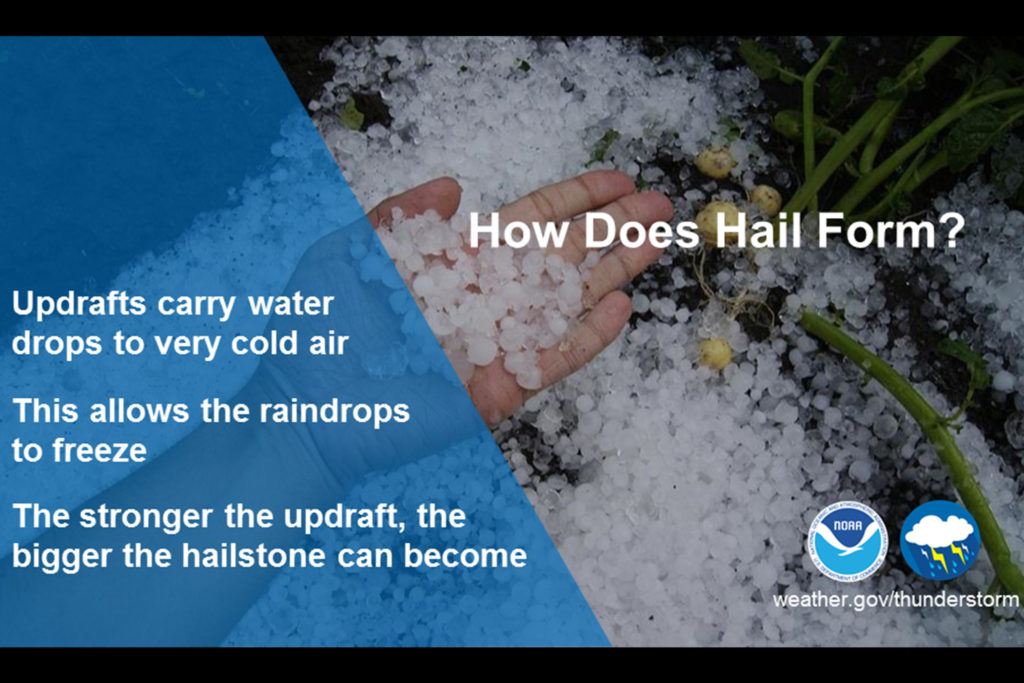In 2017, a storm system lasting over a week created severe hail and high wind damage, reaching from Minnesota to Texas to Virginia to New York. The Minneapolis metro area suffered especially, receiving hail damage to many buildings and vehicles. The total damage estimate was over $2.5 billion.
Hail is product of thunderstorms that can cause nearly $1 billion in damage every year. Most hail that falls is pea-sized. Some hail is the size of baseballs. Hail can also reach the size of a grapefruit. Large hail stones fall faster than 100 mph and, on occassion, have killed people.
On June 22, 2003, a hailstone recovered in Aurora, NE, had a diameter of 7 inches and a circumference of 18 3/4 inches. This hailstone was larger than the previous record large hailstone that fell in Coffeyville, KS, in 1970 and measured 5.7 inches in diameter.
However, weight is the most important measurement of a hailstone. An accurate weight could not be determined for the Aurora hailstone. The Coffeyville hailstone of 1970 remained the heaviest hailstone weighed and verified in the United States at 1.67 pounds, until the record was broke in July 2010 in Vivian, SD. This storm produced a hailstone that was 7.87 inches in diameter and weighed 1.9375 pounds. This hailstone was larger than a bowling ball!
Chunks of ice that fall from the sky can cause serious damage to people, animals, and property. But what exactly causes hail to form? Watch this video to learn more about the science of hail!
